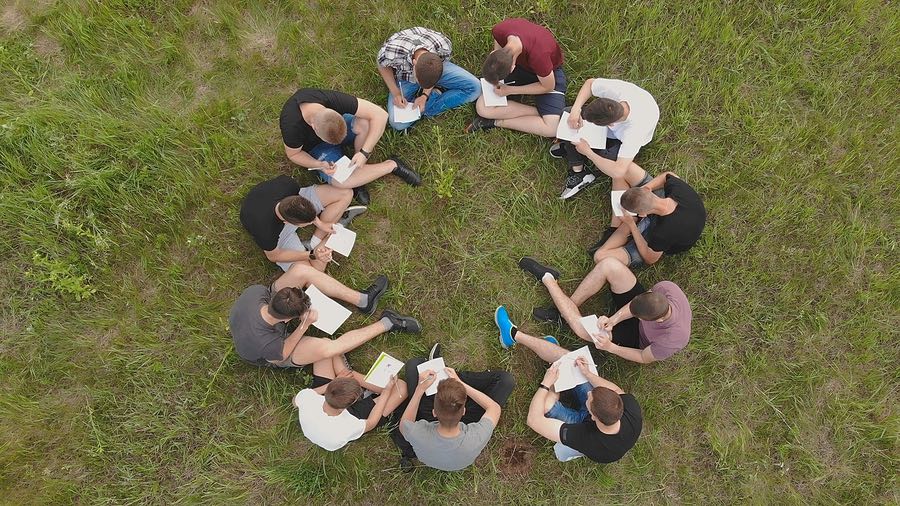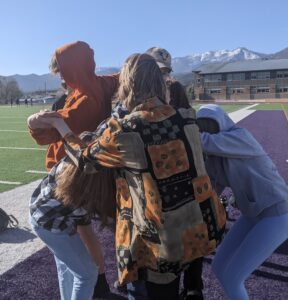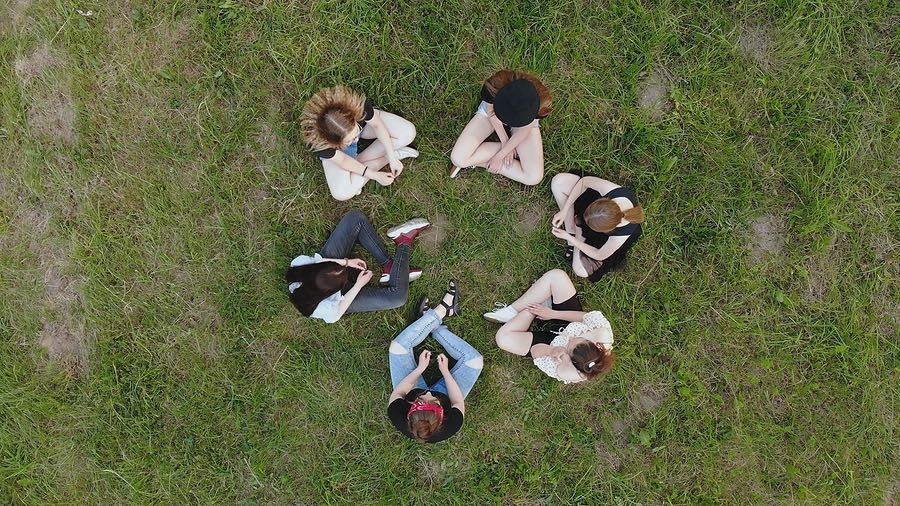
In 2020, FCRJ was one of five organizations to awarded
funding from the Colorado Attorney General’s Office to reduce the
school-to-prison pipeline. With these funds, the Restorative Schools Program
was launched. Restorative Schools staff and facilitators use restorative
practices in schools to reduce the impact of suspensions, expulsions, truancy
and in general, punishment-based paradigms that feed the prison pipeline. As
the only rural organization to receive this funding, the Full Circle
Restorative Justice, Restorative Schools Program offers important insights
toward policy statewide. The Restorative Schools Program currently
includes:
Full Circle Restorative Justice practitioners use restorative justice practices to help schools address patterns of behavior that are causing harm or disruption to the learning environment.
The restorative process spans from informal “circles” that teachers may choose to hold during class, to a structured conversation called a “conference” with students, parents, and school staff that may be integrated into existing disciplinary structures.

A restorative approach does not excuse or ignore behavior that has caused harm. It is fundamentally a different approach to addressing harm and conflict. When punishment is the focus, accountability and growth can and often do take a back seat. A restorative framework views mistakes or conflict as valuable opportunities to learn, grow, and strengthen social and emotional skills. Particularly with students, restorative practices provide effective tools to facilitate personal growth, leadership, and positive development.
· Bullying - including groups and social media
· Truancy or disengagement with school
· Conflicts, including physical altercations
· Reintegration after suspension or significant break from school
· Building opportunities for student/peer leadership and connection
· Practicing conflict resolution strategies

A classroom or group of students can use a circle to “check in”, set expectations, recognize fun or helpful peer experiences and share feelings about the school day. Teachers and students can be trained to use techniques to encourage others to speak openly, honestly, and with respect – this is social and emotional learning. The circle structure can be adapted to a wide range of needs - everything from setting ground rules, defining agreements and values, to addressing disruptive behavior, or processing a difficult event.
This process is used for more impactful incidents, or reoccurring patterns of behavior. The conference is a facilitated conversation that is confidential and voluntary with two main parts. First, the person who caused harm must listen as the impacted people describe what they have experienced, and the person who caused harm is given a chance to speak about how they will be accountable for these actions. The second part of the conversation is focused on helping the impacted people and the person who
caused harm agree on a plan that can make things right as much as possible and work to prevent further incidents. This will often include a written agreement that may also be tied to the school’s “traditional” disciplinary measures.
Before the restorative conference, we hold separate confidential meetings with each of the involved parties so we can get everyone's input about what happened and why, as well as ideas to repair the harm. For example, a bullying incident will require separate conversations with the families of each student involved, as well as any teachers or staff who were directly impacted.

If your child has been invited to participate in a restorative conference, you may be asked to help them complete an impact or accountability statement, which will be used to help plan the conference.
Participation in this process is completely voluntary and can be ended at any time. The restorative approach means that students may participate only if they have demonstrated willingness to be accountable and work to repair the harm during the preparation meeting. Everyone who participates must commit to remaining respectful, following the guidelines established together with the help of the facilitator, and committing to confidentiality.
Examples of Restorative Conferences:
Example of restorative dialogue in school pre-conference
Windows, lenses, and mirrors: framing RJ within larger work for justice
Ted Talk: The Cop and the Criminal
Read about how Restorative Justice is being used in Chicago to build and heal communities
A rock and rug - A new technology to bring Restorative Practices in Schools
Restorative Justice in U.S. Schools: An Updated Research Review